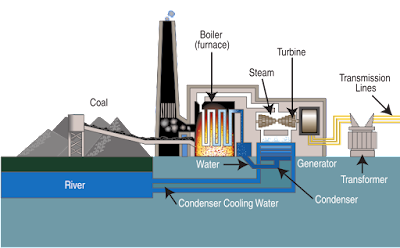Tragically, a contractor lost their life on Wednesday morning due to an explosion at the Oak Grove Power Plant near Franklin.
According to Robertson County Emergency Management, the fatality occurred as a result of a steam engine explosion at the power plant situated between Bremond and Franklin.
Fortunately, no additional injuries were reported, and emergency medical services have confirmed that the situation is currently under control with no risk to the public.
The Oak Grove Power Plant, owned by Luminant, operates as a 1,600-megawatt coal-fired facility in Robertson County. The plant opened in 2010 with two boilers, each generating 800 megawatts using lignite from a nearby mine. Luminant is a subsidiary of Vistra and generates 39,000 megawatts of electricity across 12 states.
More details will be provided as they become available. Luminant released a statement stating that the incident took place at approximately 8 a.m. during the commissioning of a new auxiliary boiler.
Emergency calls started coming in shortly before 9 a.m. on Wednesday, reporting a boiler explosion at the power plant. Upon arrival, first responders from Robertson County found a severely injured individual at the scene. Regrettably, the contractor succumbed to their injuries, as confirmed by Luminant, the parent company of the power plant.
Luminant expressed condolences to the families affected by this unfortunate event and extended gratitude to the local first responders for their swift response and efforts to provide assistance.
No further injuries were reported, and authorities have declared that the incident is "under control."
It is important to note that this is the second major incident at the Oak Grove Power Plant this year. In February, four workers were hospitalized after potential exposure to a hazardous chemical.
Luminant has stated that they will collaborate closely with the contractor's employer, as well as state and federal regulators, to investigate the cause of this incident. Despite the tragedy, the Oak Grove Power Plant remains operational and continues to generate electricity, according to the company.
Robertson County First Responders promptly responded to the explosion report at the Oak Grove Power Plant. Initial reports indicated an explosion with multiple injuries. However, upon arrival, it was determined that the explosion originated from a boiler and resulted in one person sustaining serious injuries, ultimately leading to their unfortunate demise. There are no other reported injuries, and the situation is currently under control. The public is not at risk. Please keep all Luminant employees and the victim's family in your thoughts and prayers.
How do coal-fired power plants work?
- Fuel Preparation: Coal is mined from the earth and transported to the power plant. At the plant, it is typically pulverized into a fine powder to increase its surface area and improve combustion efficiency. This powdered coal is often referred to as pulverized coal or pulverized fuel.
- Combustion: The pulverized coal is blown into a combustion chamber within a boiler. In the boiler, the coal is mixed with a controlled amount of air and ignited, creating a high-temperature combustion process. The combustion releases heat energy, which converts water in the boiler's tubes into high-pressure steam.
- Steam Generation: The high-pressure steam produced from the combustion process drives a turbine. The steam enters the turbine at a high velocity and pressure, causing the turbine blades to spin.
- Electricity Generation: As the turbine spins, it is connected to a generator, which converts the mechanical energy from the turbine into electrical energy. This is achieved through the principle of electromagnetic induction. The generator contains a rotor that rotates within a magnetic field, producing an electric current in the generator's coils.
- Cooling: After passing through the turbine, the steam is condensed back into the water using cooling water from a nearby source, such as a river or cooling tower. This condensed water, called condensate, is then pumped back into the boiler to be heated and converted back into steam.
- Emissions Control: Coal combustion releases various pollutants, including sulfur dioxide (SO2), nitrogen oxides (NOx), particulate matter, and carbon dioxide (CO2). To reduce emissions, coal-fired power plants often employ emission control technologies such as flue gas desulfurization (FGD) systems to remove SO2, selective catalytic reduction (SCR) or selective non-catalytic reduction (SNCR) systems to reduce NOx and particulate matter control devices.

